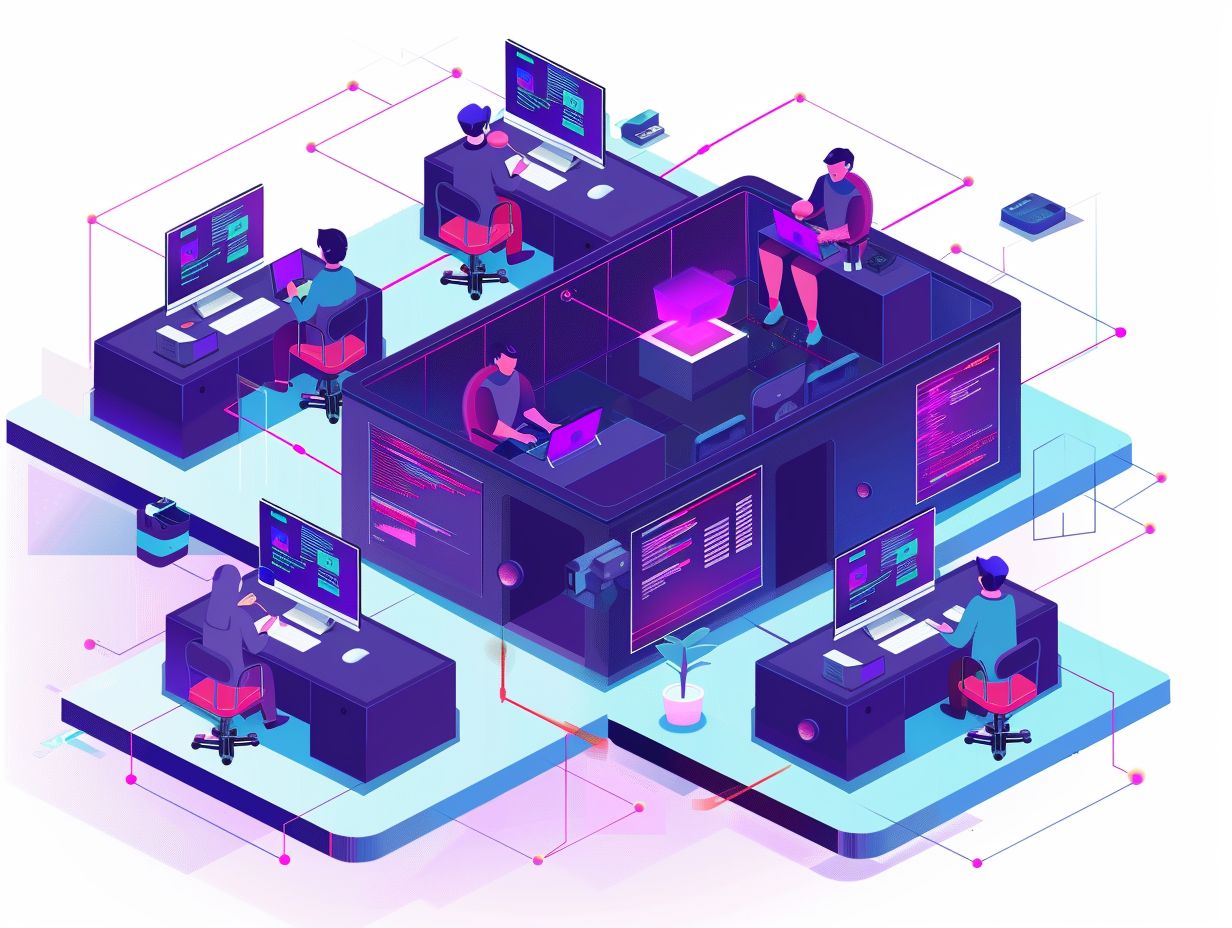If you are seeking to enhance the efficiency and customer experience within your contact center, understanding call routing and queuing is imperative. This article will elucidate the fundamental concepts of call routing and queuing, highlight the advantages of proper configuration, and delve into the factors to contemplate when establishing your system.
Additionally, best practices for configuring call routing and queuing will be provided, alongside common errors to steer clear of. Keep reading to discover how to optimize your contact center operations.
Key Takeaways:

Understanding Call Routing and Queuing in Contact Centers
Understanding call routing and queuing in contact centers is crucial for ensuring seamless communication between customers and agents. It involves directing incoming calls to the appropriate agents or departments based on predefined criteria and managing the waiting queue effectively.
The process of call routing and queuing plays a significant role in enhancing customer service efficiency and satisfaction levels. Technologies such as Automatic Call Distributors (ACD) help in automatically distributing calls to agents, reducing wait times, and ensuring prompt responses. Customer Relationship Management (CRM) systems enable agents to access customer information quickly, leading to personalized interactions. Interactive Voice Response (IVR) systems offer self-service options, optimizing call distribution and reducing agent workload. Contact Center as a Service (CCaaS) solutions further streamline operations, improving overall call handling and customer experience.
Explanation of Key Concepts
The key concepts related to call routing and queuing in contact centers revolve around the efficient distribution of calls through automated systems like IVR and CCaS, ensuring that customers are connected to the right agents promptly.
IVR, or Interactive Voice Response, plays a crucial role in directing callers to the appropriate department or self-service options based on their inputs. This automation not only saves agents’ time but also enhances customer satisfaction by reducing wait times. CCaS, or Contact Center as a Service, provides cloud-based solutions that offer scalability and flexibility for call centers.
Combining IVR functionalities with CCaS benefits optimizes call handling processes, leading to smoother operations and improved customer experiences. Advanced technologies like Genesys further streamline call management by integrating various communication channels and data analytics to enhance efficiency.
Benefits of Proper Call Routing and Queuing
Implementing proper call routing and queuing mechanisms in contact centers can significantly enhance the customer experience and operational efficiency. Companies such as Vonage have utilized AI voice technologies to optimize call handling processes, ultimately enhancing overall service quality.
This proactive approach not only minimizes customer wait times but also ensures that inquiries are directed to the most suitable agents, resulting in expedited resolutions and heightened customer satisfaction. Renowned call center strategist, Jo Robinson, has been a trailblazer in developing strategies to optimize call flows for seamless and productive interactions. By embracing advanced call routing technologies, businesses can also gain valuable data insights to continually enhance their customer service processes.
Improved Customer Experience
Effective call routing and queuing are essential for enhancing the customer experience. By minimizing wait times, ensuring personalized interactions through integrated CRM systems, and improving overall satisfaction levels, companies can excel in customer service, as demonstrated by Peter Massey’s organization.
Efficient call distribution not only streamlines communication processes but also facilitates the prompt resolution of customer inquiries, resulting in increased levels of customer satisfaction. Utilizing CRM systems to route calls based on customer data and preferences allows businesses to deliver tailored experiences, demonstrating to customers that they are valued and understood. Industry leaders like Massey have proven that intelligent call distribution can significantly enhance customer loyalty and drive repeat business.
Efficient Use of Resources
Utilize optimized call routing and queuing systems to enhance operational efficiency in contact centers. These systems help match caller requirements with agent skill sets, ultimately reducing handling times and improving overall productivity. Atiq Rehman has highlighted the benefits of strategic routing strategies for organizations like NSPCC.
For example, NSPCC implemented a dynamic call routing system that directs calls based on the specific issue the caller is addressing, ensuring they are connected with the most suitable agent. This approach resulted in decreased average call handling times and significantly improved customer satisfaction rates. Atiq Rehman’s expertise in optimizing routing solutions was instrumental in achieving these impressive outcomes, underscoring the importance of efficient call routing in maximizing resource utilization within contact center operations.
Factors to Consider when Configuring Call Routing and Queuing

When configuring call routing and queuing systems, you need to consider various factors such as call volume fluctuations, types of incoming calls, and agent skillset requirements to ensure seamless operations. Companies like TUI have excelled in optimizing call flows, as demonstrated by Enda Kenneally’s expertise.
Strategies involving closely analyzing call data to predict peak call times and allocate resources efficiently are crucial. By leveraging advanced call routing technologies, companies can manage call volumes effectively, ensuring that customers receive prompt assistance. Matching agent skills with call demands is essential for maximizing productivity and customer satisfaction. Continuous agent training to enhance competencies and adaptability is emphasized, enabling agents to handle diverse call scenarios with expertise.
Volume of Calls
The effectiveness of call routing and queuing strategies is determined significantly by the volume of incoming calls. Organizations such as DarkLight have demonstrated efficient management of high call volumes, as seen in the optimizations made by Celia Cerdeira in call handling processes.
During periods of peak call loads, businesses must make crucial decisions based on call volume data to ensure the proper distribution and allocation of resources. Through the utilization of advanced analytics and call routing technologies, companies can decrease wait times, enhance customer satisfaction, and streamline operations.
Celia Cerdeira’s expertise in enhancing call routing efficiency has played a crucial role in guiding organizations towards the adoption of industry best practices. Her strategic insights have enabled companies like DarkLight to establish benchmarks in effectively managing call volumes with precision and flexibility.
Types of Calls
Understanding the different types of incoming calls is crucial for configuring effective call routing and queuing mechanisms. Your organization can benefit significantly from Dialpad’s expertise in handling diverse call types, as demonstrated by Artur Michalczyk’s proficiency in customizing call routing solutions.
By categorizing calls based on their nature and origin, businesses like yours can ensure that each call is directed to the most suitable team or individual, which streamlines the communication process and enhances the overall customer experience. Dialpad’s effectiveness is evident in its ability to prioritize urgent calls, route sales inquiries directly to the sales department, and offer personalized support for technical issues. Artur Michalczyk’s strategies involve integrating AI algorithms to identify call patterns and optimize response times, leading to improved efficiency and increased customer satisfaction.
Agent Skillset
Aligning your agent skill sets with incoming call requirements is essential for effective call routing and queuing. The utilization of AI voice technologies can assist in matching caller needs with agent proficiencies, as exemplified by industry leaders such as Budd who excel in optimizing agent skillset allocations.
By incorporating AI-driven algorithms, call centers can intelligently direct calls based on the skills and expertise of available agents, ensuring that customers are connected with the most qualified representatives. This not only enhances customer satisfaction but also enhances operational efficiency.
The success of Budd in optimizing agent capabilities through intelligent call distribution highlights the significance of integrating keywords and entities to ensure relevance and accuracy in call handling. Such innovations are transforming the way businesses manage their inbound calls, resulting in enhanced customer experiences and increased productivity.
Best Practices for Configuring Call Routing and Queuing
Implementing best practices for configuring call routing and queuing systems can enhance operational efficiency and customer satisfaction in contact centers. By leveraging technologies like IVR, CCaS, and advanced solutions such as Genesys, you can effectively streamline call distribution processes.
IVR, Interactive Voice Response, plays a crucial role in automatically interacting with callers and directing them to the most appropriate department or agent. By strategically implementing IVR technology, contact centers can reduce wait times and ensure that callers are routed to the right resources swiftly.
Similarly, CCaS, Contact Center as a Service, offers cloud-based solutions that enable seamless integration of multiple communication channels for a unified customer experience. Genesys technologies, known for their robust features and scalability, provide advanced tools for real-time monitoring and optimizing call routing mechanisms.
Designing a Logical Routing Structure
To ensure that calls are directed efficiently to the appropriate agents or departments, it is crucial to design a logical routing structure. The use of integrated CRM systems can further optimize routing logic, as evidenced by the successful implementation of tailored call flow structures by companies such as Peter Massey’s.
Organizations can benefit from leveraging CRM systems to tailor call routing paths based on various parameters, including caller information, agent availability, and customer preferences. This customization ensures that each call is directed to the most suitable resource, leading to enhanced customer satisfaction and reduced handling times.
Industry leaders like Massey have demonstrated that implementing intuitive routing frameworks not only streamlines operations but also allows businesses to effectively adjust to evolving customer requirements.
Strategic integration of keywords and entities can enhance the efficiency and personalization of call routing, resulting in superior customer experiences.
Utilizing Intelligent Routing

Intelligent routing mechanisms utilize AI voice technologies to efficiently match caller preferences with agent skill sets, optimizing call distribution and improving customer interactions. Companies such as Vonage have been at the forefront of implementing intelligent routing strategies, integrating AI voice technology for delivering personalized service.
By leveraging the capabilities of AI voice, these companies can develop adaptive call routing solutions that respond in real-time to evolving customer requirements and agent availability. This high degree of customization not only enhances operational efficiency but also greatly enhances customer satisfaction by ensuring that callers are connected with the most suitable agent, leading to faster issue resolution and a more tailored customer experience.
Implementing Self-Service Options
By integrating self-service options within call routing systems, you can give the power to customers to resolve queries independently, which in turn reduces the workload on agents and enhances operational efficiency. Cutting-edge technologies such as AI voice technology, advocated by experts like Atiq Rehman, are revolutionizing self-service capabilities within contact centers.
The implementation of AI voice technologies enables customers to navigate options seamlessly through natural language processing, resulting in faster query resolutions and improved customer satisfaction. Organizations can realize cost savings and operational efficiencies by directing routine inquiries to automated systems through the utilization of self-service features.
Atiq Rehman, a prominent figure in the field of self-service innovations, stresses the significance of providing personalized self-service experiences tailored to diverse customer needs. This approach ultimately fosters stronger brand loyalty and trust among customers.
Common Mistakes to Avoid when Configuring Call Routing and Queuing
Avoiding common mistakes when configuring call routing and queuing systems is essential for ensuring optimal performance and customer satisfaction in contact centers. Pitfalls such as overcomplicating the routing structure and neglecting agent availability can hinder operational efficiency and service quality.
Failing to properly account for variations in agent workload and skill levels can result in an uneven distribution of incoming calls, leading to longer wait times and decreased customer retention. Overlooking the importance of real-time monitoring and adjustments in call routing configurations may exacerbate issues by not allowing for timely responses to changing call volumes.
It is crucial for you to strike a balance between a streamlined routing process and the flexibility to adapt to fluctuating demands in order to maximize the efficiency of your contact center’s operations.
Overcomplicating the Routing Structure
Overcomplicating the routing structure can lead to inefficiencies in call handling and customer service, impacting operational productivity and agent performance. To streamline routing complexities and enhance overall service delivery, companies can take a cue from organizations like TUI that have optimized CRM systems.
By simplifying call routing processes, companies can reduce the risk of customers being transferred between multiple departments, which can lead to frustration and potential customer dissatisfaction. This efficient approach ensures that calls are directed to the appropriate department or agent, reducing wait times and increasing first-call resolution rates. TUI’s strategic integration of CRM systems facilitates a seamless flow of customer data, enabling agents to access relevant information swiftly and provide personalized service. This, in turn, fosters stronger customer relationships.
Not Considering Agent Availability
Neglecting your agent availability when configuring call routing systems can lead to inefficiencies and longer wait times for your customers. By adopting AI voice technologies, such as those utilized by organizations like Job Centre Plus, you can optimize your agent scheduling and availability to enhance the efficiency of your services.
When you leverage AI voice solutions, your organization gains the ability to predict call volumes, allocate resources efficiently, and reduce customer wait times. Through the analysis of real-time data and caller behaviors, your company can dynamically adjust agent availability to align with fluctuations in demand. This proactive strategy not only enhances customer satisfaction but also improves agent productivity and overall operational performance.
The implementation of AI voice technology at Job Centre Plus serves as a prime example of how sophisticated call routing strategies can streamline workflows and enhance service quality by intelligently allocating agents.
Ignoring Customer Preferences
Neglecting customer preferences in call routing configurations can result in customer dissatisfaction and breakdowns in communication. By utilizing AI voice technologies to customize routing paths, companies can enhance customer interactions and build brand loyalty, as demonstrated by Enda Kenneally’s success in this area.
The advancements in AI voice technologies enable a more seamless and efficient customer experience by allowing the system to analyze data in real-time and direct calls to the most suitable agent based on factors such as past interactions, language preferences, and customer history. The integration of this technology has led to notable reductions in call durations, higher rates of first-call resolution, and an overall improvement in customer satisfaction levels.
With Enda Kenneally’s expertise and achievements in this field, businesses are increasingly realizing the benefits of incorporating AI voice technologies into their call routing strategies.
Frequently Asked Questions

1. What is call routing and queuing in contact centers?
Call routing and queuing in contact centers is a process that directs incoming calls to the most appropriate agent or department based on predetermined criteria. Queuing refers to the holding of calls in a queue until an agent is available to handle them.
2. How can I configure call routing in my contact center?
To configure call routing, you will need to first identify your business needs and customer preferences. Then, you can use call routing software or work with your service provider to set up rules and criteria for directing calls to specific agents or departments.
3. Can I customize my call routing and queuing options?
Yes, call routing and queuing can be customized to meet the specific needs of your business. You can set up different routing options for different types of calls or create specific queues for VIP customers. This allows for a more tailored and efficient call handling process.
4. What is the benefit of configuring call routing and queuing in contact centers?
Configuring call routing and queuing can improve call handling efficiency and customer satisfaction. By directing calls to the most appropriate agent or department, customers are more likely to have their issues resolved quickly and effectively.
5. Are there any challenges to configuring call routing and queuing?
One challenge can be determining the most effective routing criteria for your business. It may also require regular monitoring and adjustments to ensure optimal performance. Working with a provider or utilizing advanced call routing software can help overcome these challenges.
6. Can call routing and queuing be used for other forms of communication besides phone calls?
Yes, call routing and queuing can be applied to other communication channels such as emails, live chats, and social media messages. This allows for a seamless and consistent customer experience across different platforms.
